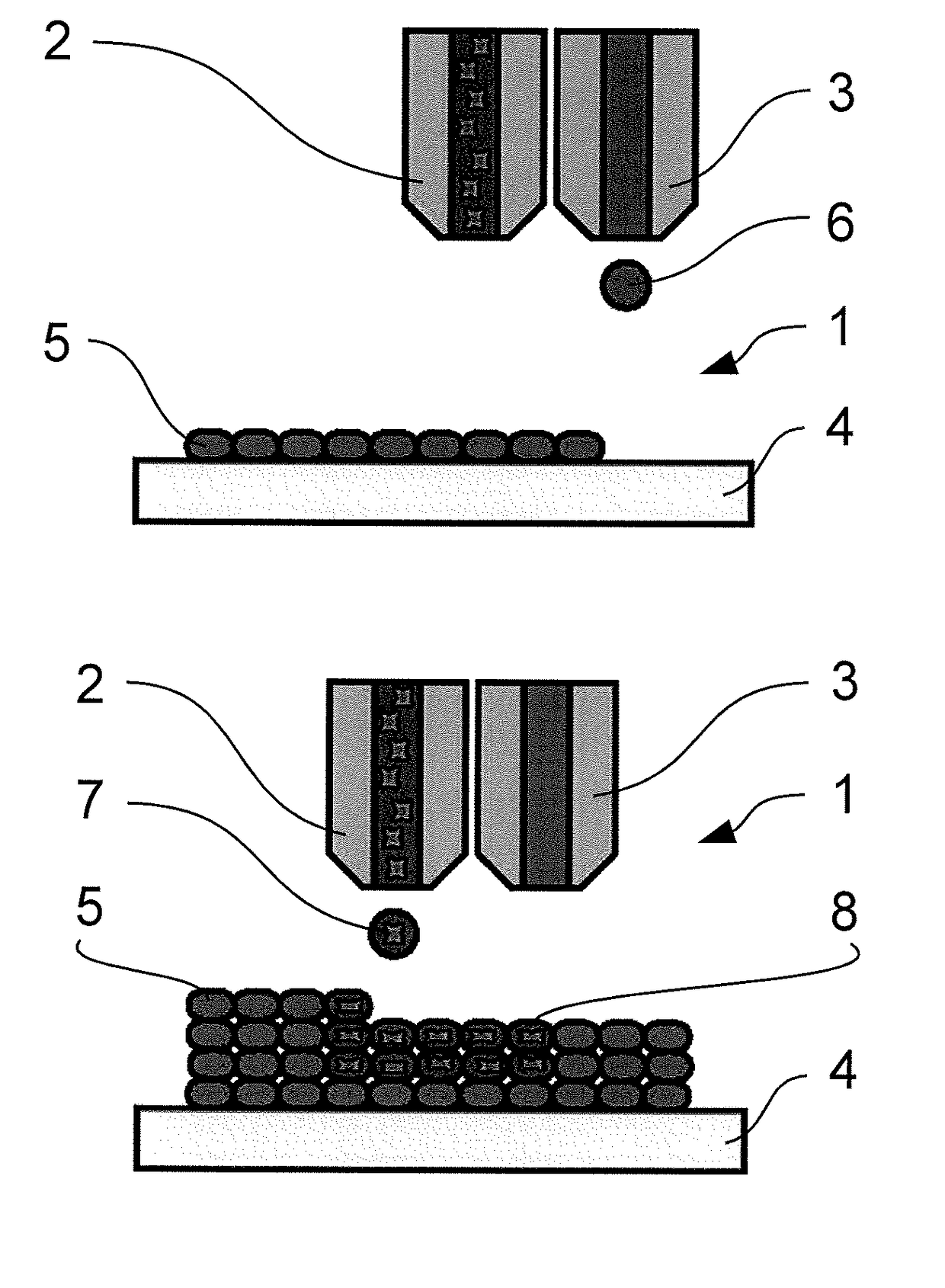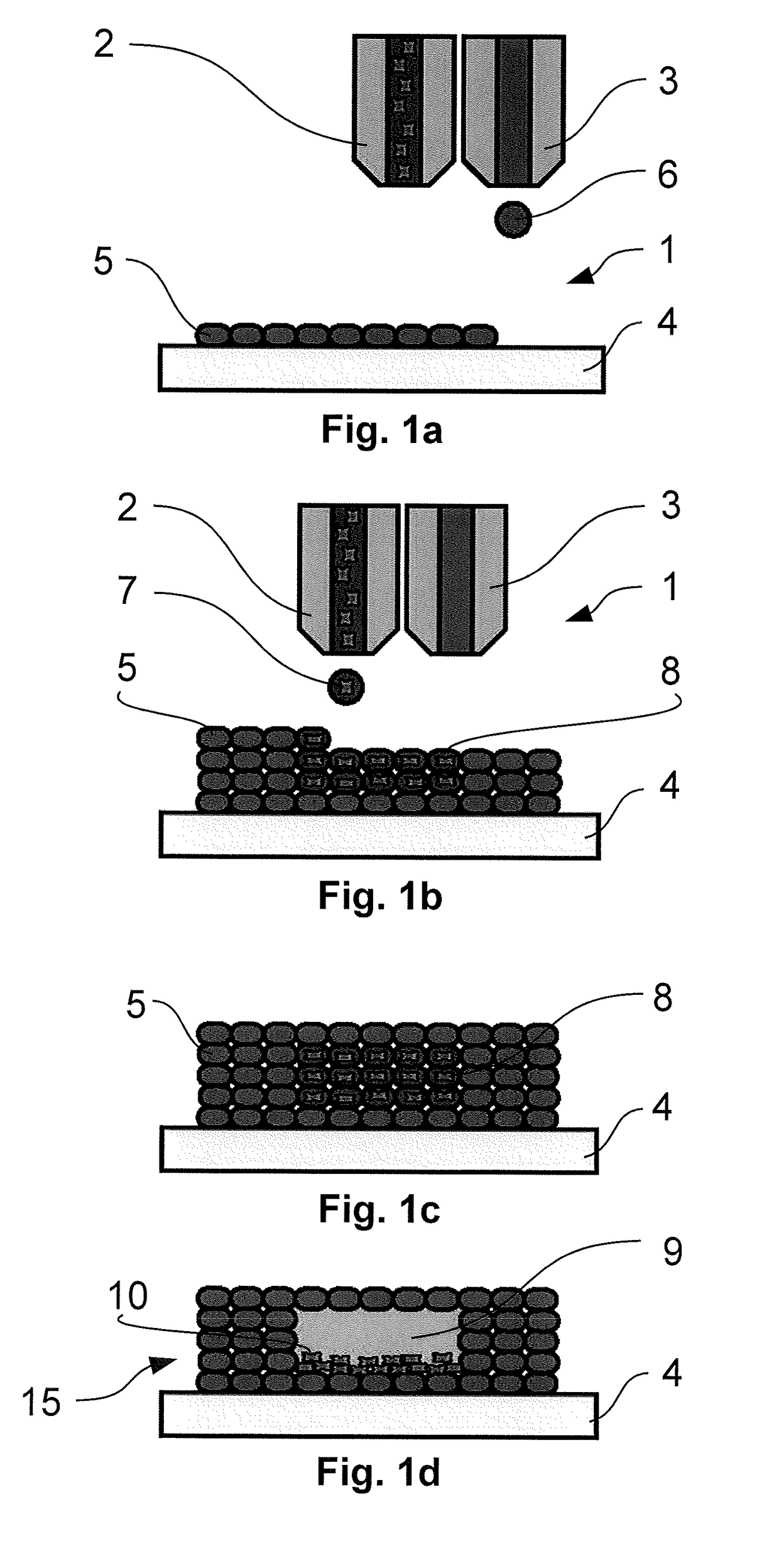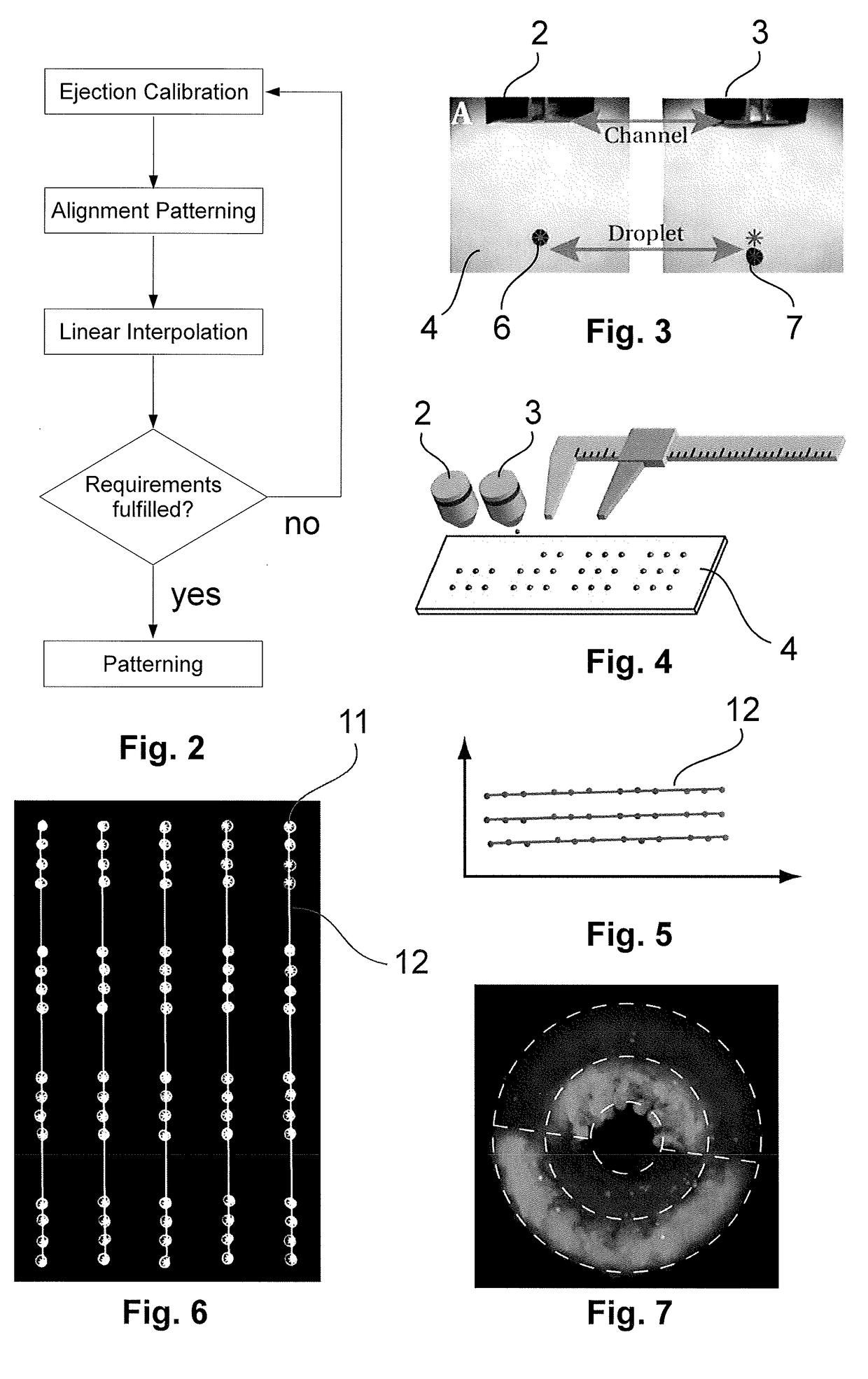A method for building a structure containing living cells
a technology of living cells and structures, applied in the direction of cell culture supports/coatings, additive manufacturing apparatus, 3d object support structures, etc., can solve the problems of limited use of single-component bio printing, inability to develop adequate hydrogel bioinks, and inability to meet the needs of use,
- Summary
- Abstract
- Description
- Claims
- Application Information
AI Technical Summary
Benefits of technology
Problems solved by technology
Method used
Image
Examples
Embodiment Construction
[0046]The compositions of the present invention comprise a first material and a second material, wherein the first material is cross-linkable by a first cross-linking reaction and the second material is cross-linkable by a second cross-linking reaction, wherein the first cross-linking reaction and the second cross-linking reaction are inducible by a common activator.
[0047]The first and the second cross-linking reactions are substantially compatible with each other. In the present context, the phrase “substantially compatible with each other” relates to two or more reactions, for example chemical reactions, that can proceed simultaneously in the same environment without leading to a substantially different product-distribution or having any other substantial adverse effect on each other.
[0048]Preferably the first material is a polymer, more preferably a biopolymer. In this context, the term biopolymer refers to a polypeptide, a polysaccharide or a polynucleotide. More preferably, the...
PUM
| Property | Measurement | Unit |
|---|---|---|
| diameters | aaaaa | aaaaa |
| diameter | aaaaa | aaaaa |
| outlet diameter | aaaaa | aaaaa |
Abstract
Description
Claims
Application Information
 Login to View More
Login to View More - R&D
- Intellectual Property
- Life Sciences
- Materials
- Tech Scout
- Unparalleled Data Quality
- Higher Quality Content
- 60% Fewer Hallucinations
Browse by: Latest US Patents, China's latest patents, Technical Efficacy Thesaurus, Application Domain, Technology Topic, Popular Technical Reports.
© 2025 PatSnap. All rights reserved.Legal|Privacy policy|Modern Slavery Act Transparency Statement|Sitemap|About US| Contact US: help@patsnap.com



